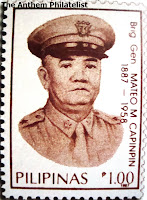The The National Anthem of Brittany

Brittany, a region of France, has a culture and language all its own (the language is more Celtic than French). Like other Celtic regions of the area, such as Cornwall, the anthem melody used is taken from the Welsh anthem, composed by James James (with some minor note changes). The lyrics were written by François Taldir-Jaffrennou in 1897 and the adaptation of the Welsh anthem was first published the following year, with the appropriate title "Henvelidigez" ("Adaptation"). It was adopted as the Breton national anthem (and a song of Welsh-Breton friendship) in 1903 at a meeting of the Union Régionaliste Bretonne, a Breton cultural and political organization.
Francois-Joseph-Claude Jaffrennou (March 15, 1879 - March 26, 1956) was a Breton language writer and editor. He was a Breton nationalist and a neo-druid bard. He is also known as François Taldir-Jaffrennou, since he also used the Druidic name Taldir ("Wall of Steel"). He was one of the pioneers of the Breton autonomist movement.
On 18 July 1899, Jaffrennou visited the Eisteddfod in Cardiff with twenty one other Bretons. He was received at Gorsedd under the name Taldir ab Hernin. At this time he translated the Welsh national anthem Land of my Fathers into Breton as Bro Gozh ma Zadoù, which became the national anthem of Brittany. This hymn is now recognized and accepted by all political and cultural groups in Brittany. It was originally published in
1898 in La Résistance.
On 7 August 1944, Jaffrennou was arrested by members of the French resistance on ch arges of having served the enemy and supported Pétain. He was also accused of wantingng to make Brittany an independent country within a Nazi dominated Europe. He was acquitted and released. On 10 August 1944, he was arrested again. After a brief incarceration at the Chateau Lancien in Carhaix, he was taken to the St Charles prison in Quimper. In early June 1945, he was transferred to Mesgloaguen, another prison. He was charged with acts which might harm the national defense, association with the Germans and denunciation of patriots. He was put on trial before the Court of Justice.
arges of having served the enemy and supported Pétain. He was also accused of wantingng to make Brittany an independent country within a Nazi dominated Europe. He was acquitted and released. On 10 August 1944, he was arrested again. After a brief incarceration at the Chateau Lancien in Carhaix, he was taken to the St Charles prison in Quimper. In early June 1945, he was transferred to Mesgloaguen, another prison. He was charged with acts which might harm the national defense, association with the Germans and denunciation of patriots. He was put on trial before the Court of Justice.
Released in 1946 he never returned to Brittany. In 1947 he resumed the leadership of the Gorsedd. He retired to Le Mans and then to Bergerac, where he died on March 23, 1956. He is buried in Carhaix.
On 7 August 1944, Jaffrennou was arrested by members of the French resistance on ch
 arges of having served the enemy and supported Pétain. He was also accused of wantingng to make Brittany an independent country within a Nazi dominated Europe. He was acquitted and released. On 10 August 1944, he was arrested again. After a brief incarceration at the Chateau Lancien in Carhaix, he was taken to the St Charles prison in Quimper. In early June 1945, he was transferred to Mesgloaguen, another prison. He was charged with acts which might harm the national defense, association with the Germans and denunciation of patriots. He was put on trial before the Court of Justice.
arges of having served the enemy and supported Pétain. He was also accused of wantingng to make Brittany an independent country within a Nazi dominated Europe. He was acquitted and released. On 10 August 1944, he was arrested again. After a brief incarceration at the Chateau Lancien in Carhaix, he was taken to the St Charles prison in Quimper. In early June 1945, he was transferred to Mesgloaguen, another prison. He was charged with acts which might harm the national defense, association with the Germans and denunciation of patriots. He was put on trial before the Court of Justice.Released in 1946 he never returned to Brittany. In 1947 he resumed the leadership of the Gorsedd. He retired to Le Mans and then to Bergerac, where he died on March 23, 1956. He is buried in Carhaix.
Above is a postcard with the score of the national anthem of Brittany. Below is an envelope with the national anthem.






